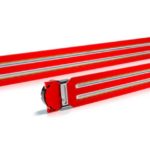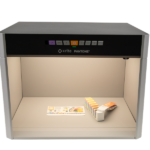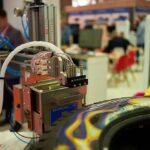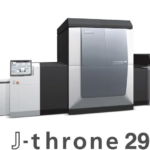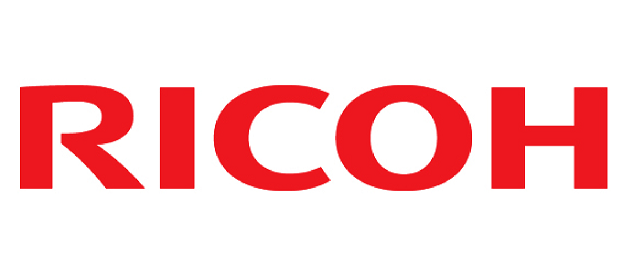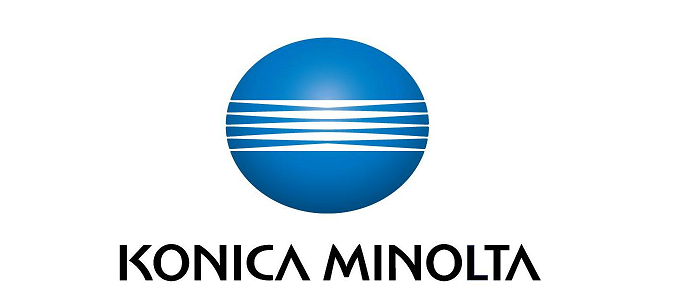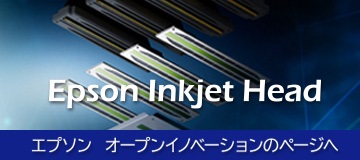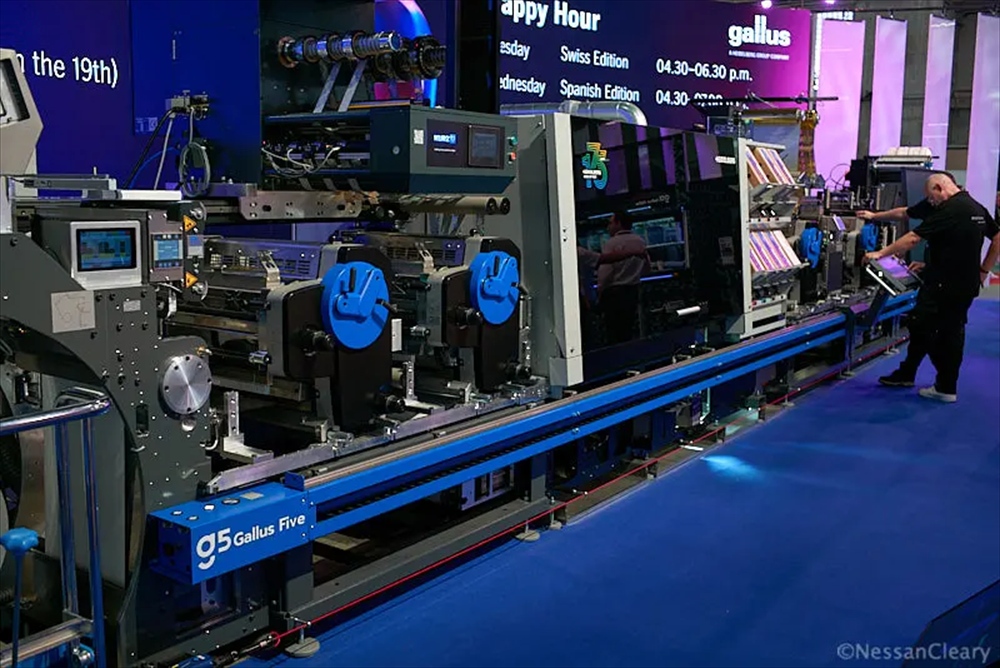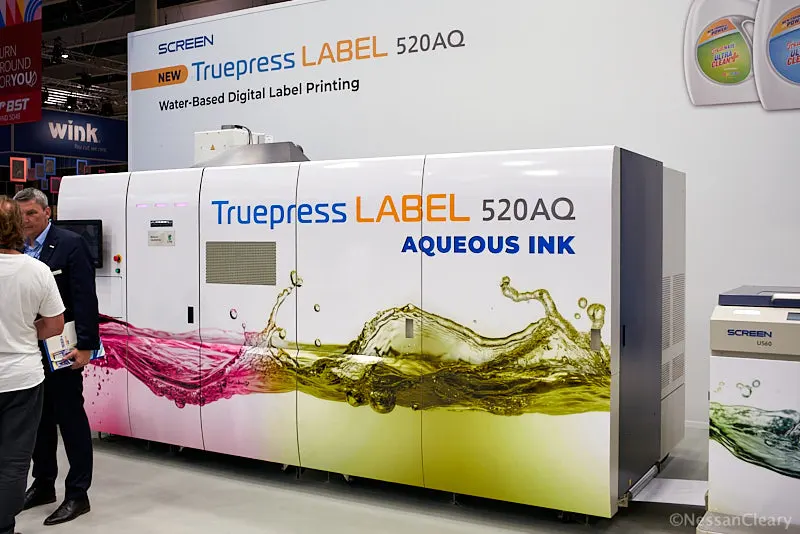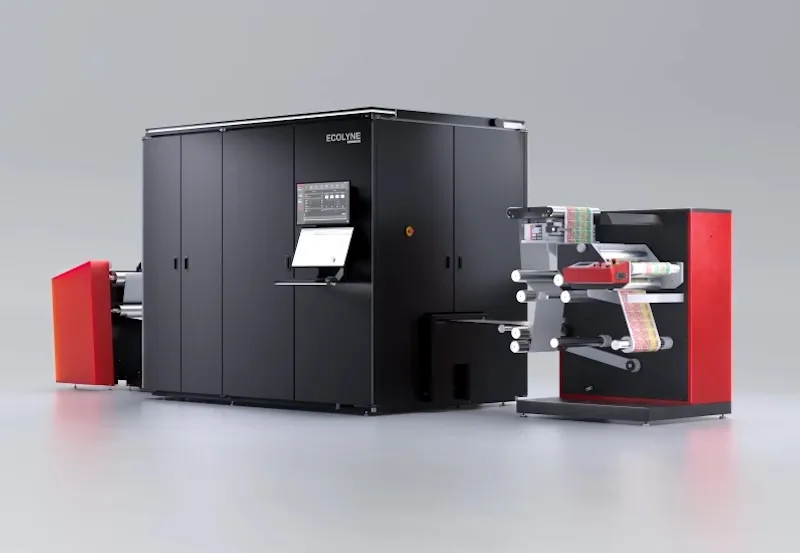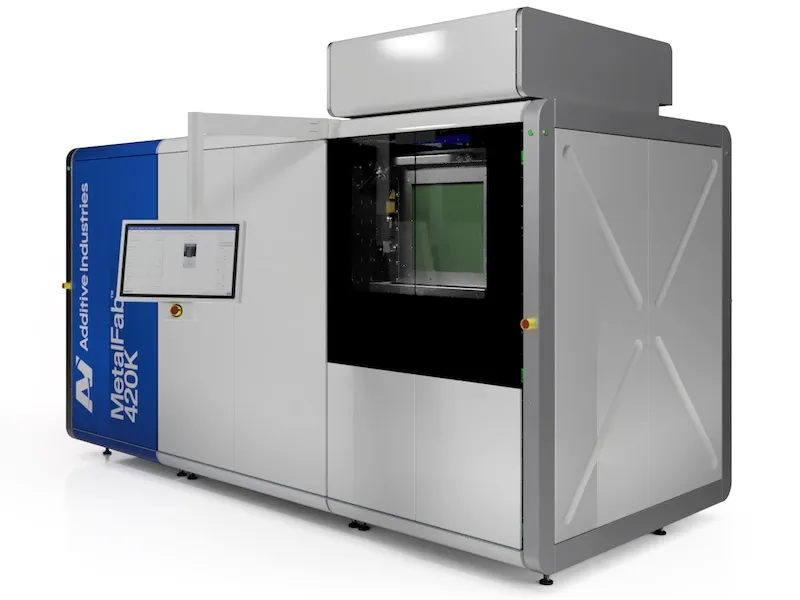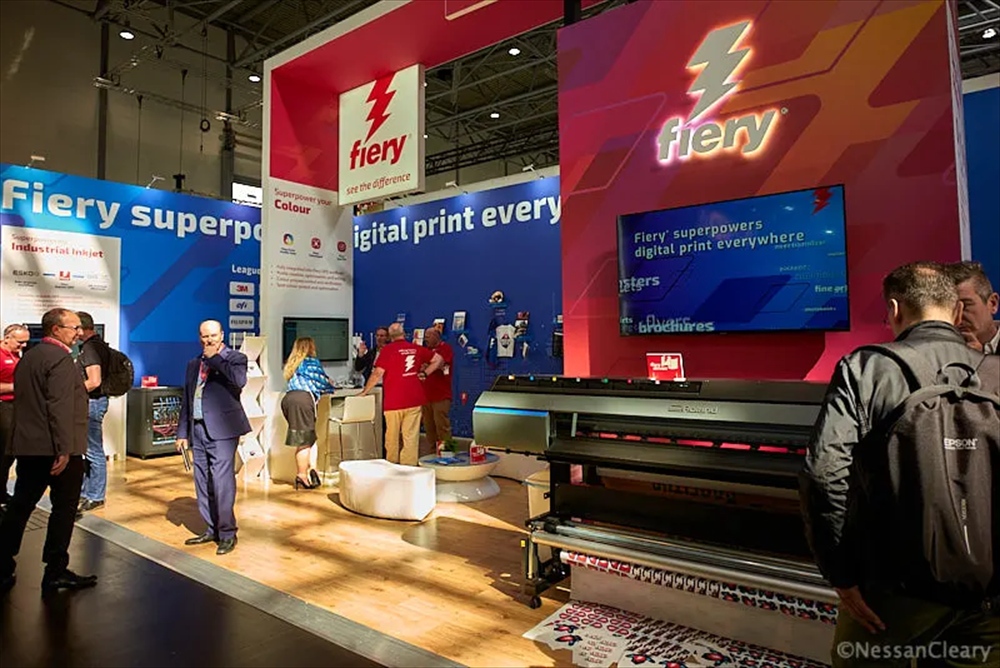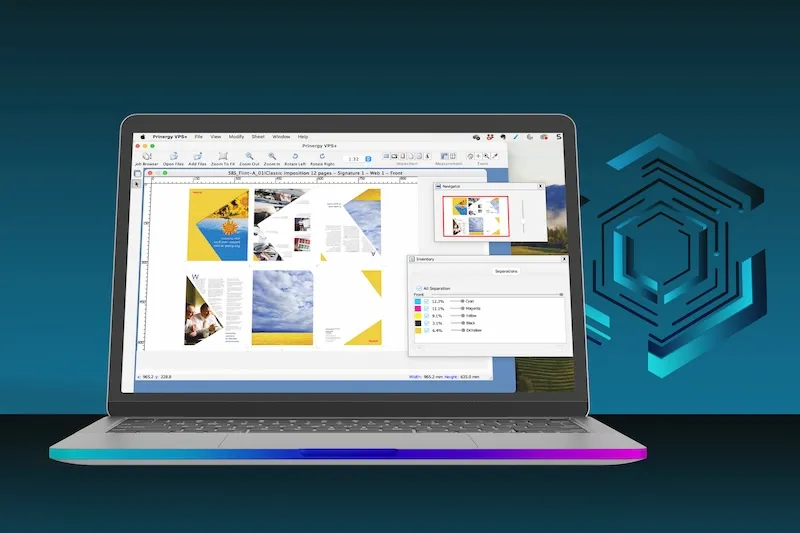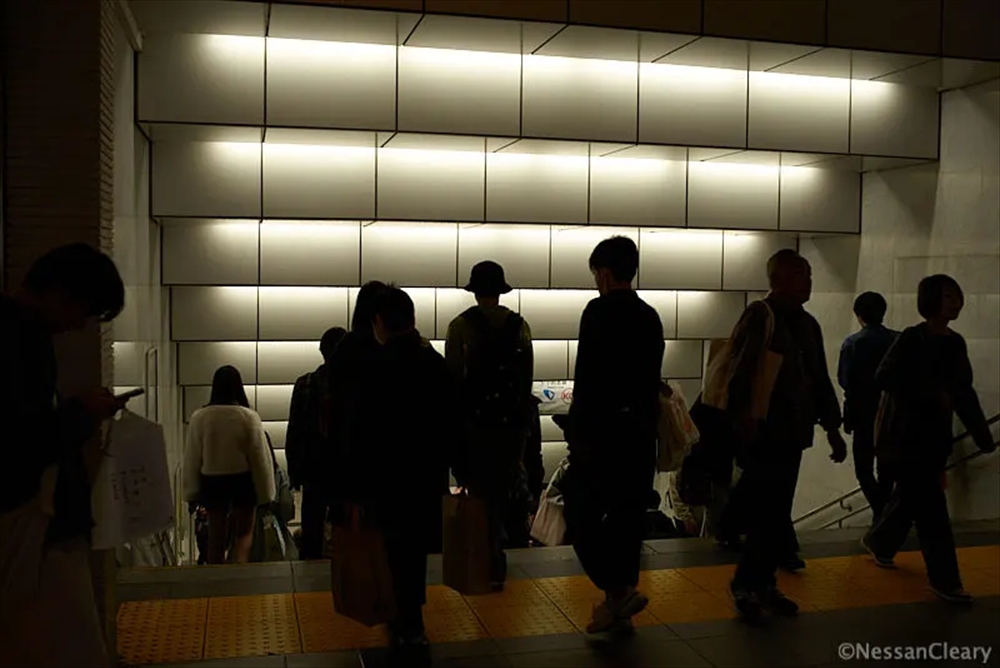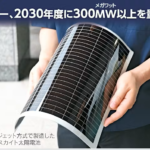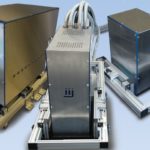- 2018-6-18
- Nessan Cleary 記事紹介
近年FESPAは、ソフトサイネージから衣料品製造まであらゆる分野を対象としたあらゆる形状とサイズのテキスタイルプリンタに発表の場を提供してきました。このことは、この新興市場の混乱を反映することにもなっています。
In recent years Fespa has hosted a growing number of textile printers of all shapes and sizes aimed at everything from soft signage to garment production, which has reflected the chaotic state of this emerging market.

Ricoh’s Ri100 – note the RH100 finishing unit underneath it.
理由の一つとしては、ベンダー自身が開発中のテキスタイルプリンタをどのように販売するのか混乱しているためです。過去のFespaではDurstの工業規模のAlphaから、衣類デザインのテストとプロトタイプ作成向けの昇華転写の1.3m未満の染料サブマシンまで全てを(ごちゃまぜに)見てきました。ベンダーは、ソフトサイネージ、超ショートラン衣類プリント、あるいは大量のホームファーニシングを区別したくない、あるいは区別できないように見えました。
The last couple of Fespa shows feel as if they’ve been split across two distinct markets – display graphics and textile printing. But at this year’s Berlin show the textile printers seemed to be a more coherent part of the overall show and most vendors seemed to have a clearer idea as to the target markets they were aiming for.
ここ最近2、3回のFespaでは、まるで2つの異なる市場に分かれているかのように感じられました。つまり、ディスプレイグラフィックスとテキスタイルプリントです。しかし、今年のベルリンのショーでは、テキスタイルプリント機は全体的なショーのより一貫した部分であるように見え、ほとんどのベンダー達は、彼らが目指している目標市場についてより明確な考えを持っているようでした。
That said, the overall printed textile market is still extremely diverse. The most basic element, at least in terms of a show like Fespa, is the soft signage, and there were several printers aimed at this. EFI, for example, added inline fixation to its Vutek FabriVu 340 to create the 340i, which should be a more attractive option for people looking to get into the soft signage market. You can turn off the inline fixation and use the machine for printing to transfer paper, together with a separate calendar for the sublimation, which makes for a better workflow, providing you’ve built up the volume of work to justify the cost of the heat press.
言えることは、テキスタイルプリント市場全体が依然として非常に多様であるということです。最も基本的な要素は、少なくともFespaのようなショーでは、ソフトサイネージであり、これを指向したいくつかのプリンタがありました。例えば、EFIは、Vignk FabriVu 340にインライン定着を追加して、340iを開発しました。これは、ソフトサイネージ市場に参入しようとする人々にとって、より魅力的な選択肢です。インラそのイン定着をオフにして、昇華のための別のカレンダーを使って、昇華転写紙にプリントする用途で使用することもできます。これにより、より多くのワークフローが可能になります。
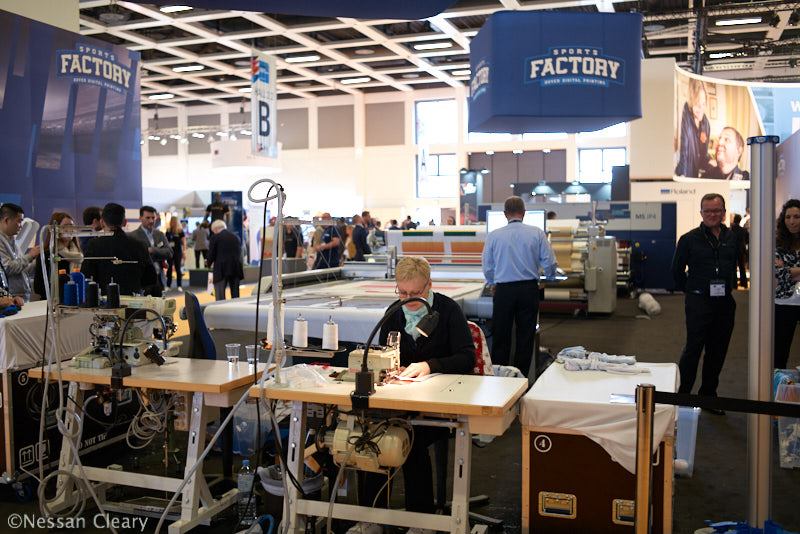
MS showed off this factory making sportswear to demonstrate its textile printers.
The direct to garment market now covers an enormous range of machines. One of the smallest was Ricoh’s Ri100, an extremely compact, desktop machine measuring just 399 x 698mm. It’s a complete solution, with an option to include a separate heat press, the Ricoh Rh100 Finisher, which has the same footprint so that the printer can be stacked on top of it. It prints mainly to cotton, including blends of up to 50 percent cotton and can be used for short runs of promotional and personalised items like T-shirts, cloth bags, cushion covers and sweatshirts.
DTG(Direct To Garment)市場は現在、膨大な範囲のプリンターをカバーしています。最小のものの1つは、わずか399 x 698mmの非常にコンパクトなデスクトップマシンであるRicohのRi100でした。これは完全なソリューションで、別のヒートプレス、リコーRh100フィニッシャー(これは同じフットプリントを持ち、プリンターをその上に積み重ねることができる)を含むオプション付きです。これは主に綿50%の混紡を含む綿に印刷され、Tシャツ、布袋、クッションカバー、スエットシャツなどのプロモーションやパーソナライズされたアイテムのショートランに使用できます。
But Fespa also now caters for the short run garment sector. Kornit, for example, has continued to roll out its HD printing system across its range and used the show to update its Storm range with a new Storm HD6 garment printer. Essentially the HD technology is a combination of Kornit’s NeoPigment Rapid ink, which offers a bigger colour gamut, plus smaller drop sizes, which should give better resolution and significant ink savings. The ink can be used with the existing Storm printers but only the HD6 version can print with the smaller drop sizes. The HD printing was originally developed for Kornit’s Vulcan system and was also added to the Avalanche series earlier this year.
しかし、フェスパは現在、ショートランのガーメントプリント分野にも対応しています。たとえば、KornitはHDプリントシステムを展開し続け、新しいStorm HD6 ガーメントプリンタのアップデート版を発表しました。基本的に、HD技術は、より広い色域を提供するKornitのNeoPigment Rapidインクと、より小さい液滴サイズの組み合わせであり、より良い解像度と大幅なインク節約をもたらすとされています。インクは既存のStormプリンタで使用することができますが、HD6バージョンのみがより小さな液滴サイズで印刷できます。 HD印刷はもともとKornitのVulcanシステム向けに開発されたもので、今年初めにAvalancheシリーズに追加されました。
Kornit also showed off its Allegro printer with neon inks and a complete production demonstration that included a sewing machine and Zund cutting table, as well as an Avalanche HD machine connected to a web-to-print ordering workflow. This was the same set-up that was shown at the Heimtextil show back
Kornitはまた、ネオンインクと、ミシンとZundカッティングテーブル、そしてWeb-to-printの注文ワークフローに接続されたAvalanche HDマシンを含む完全な生産実証で、Allegroプリンタを展示しました。これは、Heimtextilのショーバックで見せたのと同じ設定でした

This NoeCha 2 Sublimation printer is designed to print to transfer papers for the volume garment market.
There’s a direct to textile variant, the Roll2 Textile, where there is a choice of different inks that can be used with various substrates, including disperse, acid, reactive and pigmented inks. There’s also a version for Blueback paper and folding carton, which can be used with UV or water-based inks.
布へのダイレクトプリントという分野、即ちロールス・テキスタイル(Roll2 Textile)には、様々な基材に使用できる分散、酸性、反応性および顔料インクを含む種々インクが選択できます。 更に、Blueback用紙と折り畳みカートン用のバージョンもあり、UVまたは水ベースのインクが使われます。
EFI Reggiani discussed its new six colour pigment ink with binder with CMYK plus red and blue. Giorgio Sala, EFI Reggiani’s ink application specialist, says that it was developed in Italy with help from Vutek, adding: “We can eliminate the post treatment. In the drier we can fix the ink because the binder is inside the ink.” He adds: “The new ink is designed for Kyocera printheads, which all of our machines have, so we can use it with the existing machines.”
EFI Reggianiは、新しい6色のバインダー入り顔料インクについて、CMYK に加えて赤と青を訴求しました。 EFI Reggianiのインク・アプリケーション・スペシャリスト、Giorgio Sala氏は、Vutekの助けを借りてイタリアで開発されたと述べ、次のように付け加えています。 「これで後処理を無くすことができます。バインダーがインクの中に入っているので、乾燥器でインキを定着できます」。「新しいインクは、すべてのマシンに搭載されたKyoceraプリントヘッド用に設計されているため、既存のマシンでも使用できます」と付け加えています。
He says that customers mostly use these machines for home furnishing and fashion and that they are suitable for printing to materials with natural fibres such as cotton and linen.
彼によれば、顧客が主にホームファーニシングやファッションにこれらの機械を使用し、綿やリネンなどの天然繊維にプリントするのに適しているとのことです。

Mimaki has revamped this Tiger 1800, adding more Mimaki DNA to the original Meccanica design.
Mimakiは、Tiger 1800の新バージョンを発表しました。Tiger 1800は、昨年のショーで、子会社La Meccanicaによって開発されたオリジナルモデルが発表されました。今回の新しいモデルは、MAPSノズル冗長技術や、産業市場に対処するためには非常に重要な多くの個所の自動メンテナンス機構など、Mimakiプリンタに特有の多くの機能が加えられました。解像度が600dpiから1200dpiに上がったKyoceraのプリントヘッドが採用されています。 Mimakiは反応性染料インクを開発し、今年末または来年初めに市場投入される予定の顔料および酸性染料インクを開発しています。
In conclusion, I can’t help thinking that there is really a need for a separate show, dedicated to digital textile printing. Traditional textile shows like Heimtextil aren’t really interested in digital printing because it’s just a fraction of the overall textile market. Fespa, on the other hand, is completely correct in identifying this market but it’s all mixed up with the display graphics. There’s clearly a place for textile-based display graphics or soft signage. There’s even room for limited printing of furnishings and garments.
結論として、私としてはデジタルテキスタイル印刷に特化した別の展示会が必要であると思わざるを得ません。 Heimtextilのような伝統的なテキスタイルの展示会は、デジタルプリンティングというのは、市場全体のほんの一部であるため、それには本当に関心がありません。一方、フェスパは、この市場を特定するには完全に正しいですが、それはすディスプレイグラフィックスと混同されています。テキスタイルベースのディスプレイグラフィックスやソフトサイネージのための場所は明確に存在します。また、家具やガーメントへの限られたプリントの余地もあります。
But it’s clear at this last Fespa that the market for printed textiles really wants to move beyond this, to include short run fashion, on-demand industrial garment and furnishing production. The printer vendors developing this equipment are mostly the same companies making wide format printers for display graphics. But it seems to me that the customers are different, both in terms of the people ordering the printing kit and the end customers buying the final products. So I’m left wondering if there isn’t a need for a smaller, more dedicated show that can connect these textile buyers with the printing service providers and the printer vendors, which Fespa would certainly be well-placed to organise.
しかし、今回のフェスパでは、テキスタイルプリントの市場が、これらを超えて、市場がショートランのファッション、オンデマンドのガーメントおよび家具製造を含むんだ包括的な展示会を望んでいることが明確になったと思います。こういうプリンタを開発しているプリンタベンダーは、殆どがディスプレイグラフィックス用のワイドフォーマットプリンタを製造しているメーカーです。しかし、プリンタを購入する人という観点でも、最終プリント物を購入するに人という観点でも、顧客は異なっているように思えます。だから私は、これらの最終プリント物の購買者とプリントサービスプロバイダーやプリンタベンダーとを結ぶことができる、より小さくて専用のショーが必要なのではないかという気がするのです。



